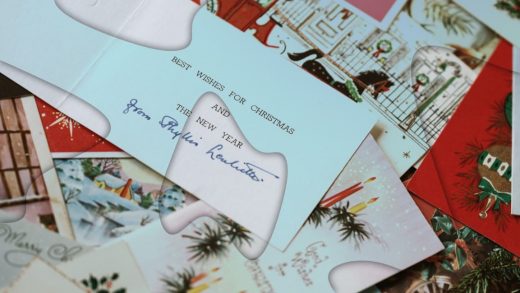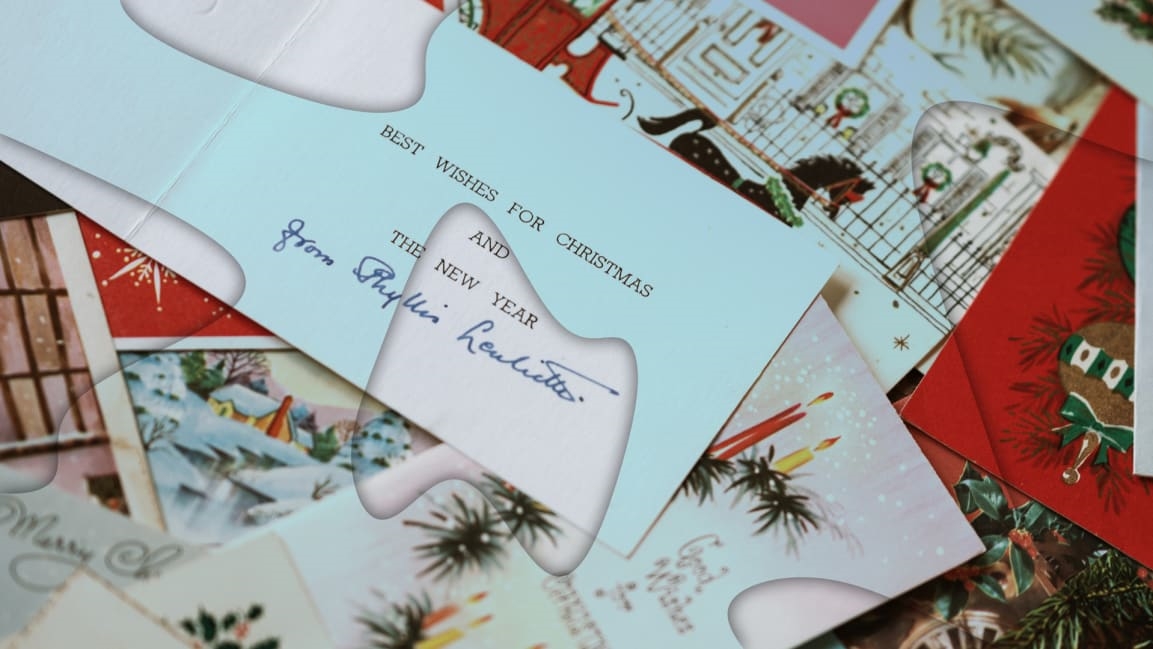Remember greeting cards? They’re making a COVID-19 comeback
In a holiday season when family gatherings are verboten and office parties have gone the way of coal in stockings, people are returning to an old tradition to share joy and well-wishes. Folded pieces of oaktag are decorated with pictures or drawings and often smudged by an overzealous ballpoint pen. A dusting of glitter, a reference to a shared memory, a hint of perfume—all attempting to bridge physical and emotional divides harrowed by a relentless pandemic.
They are, of course, greeting cards. Long the domain of grandparents, dental offices, and work clients, these physical displays of affection are making a COVID-19-era comeback.
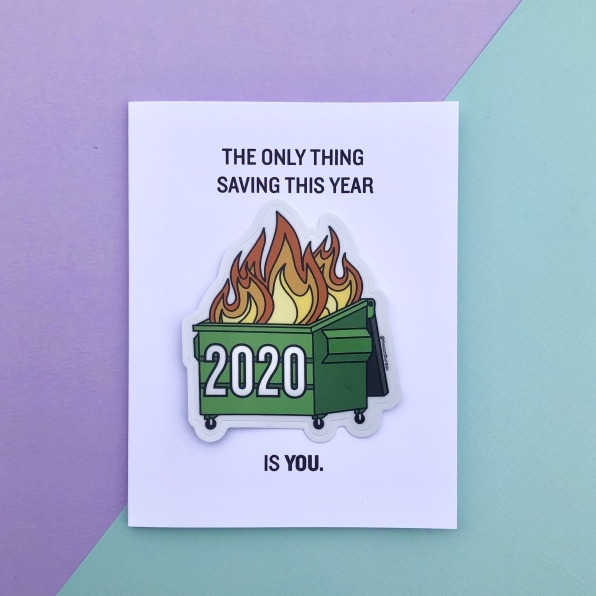
The trade association for the roughly $8 billion industry had anticipated a strong season, and that’s exactly what happened. From the greeting card giants that dominate display racks to the small hand-crafting boutiques, business is booming.
“People are not able to have in-person contact and the connections they’re used to, so they hunger for those meaningful connections,” says Lindsey Roy, CMO of Hallmark. “People are discovering or remembering cards.”
The card titan has recorded triple-digit growth in online sales during the holiday period. Consumers are gobbling up “wish I could be there” and “across the miles” cards, as well as a new line of appreciation cards for people who have helped us get through this crazy year, such as childcare workers, hairstylists, and senior-care workers.
“It’s an artifact of your relationship that really captures what’s in your heart in a meaningful way,” Roy says. “It’s a physical manifestation that someone loves you. It shows thought and effort and is something I can keep.”
And many card buyers are looking beyond the traditional. Etsy has noticed a 74% increase in searches for greeting cards, a 101% increase in searches for holiday cards, and a 46% increase in searches for personalized or custom cards from March to this month, compared to the same time period last year.
Return of senders
According to an Ipsos poll conducted for Shutterfly in October, 34% of Americans plan to send holiday cards, and 17% are sending holiday cards for the first time ever. Plus, 23% of people think it’s important to receive holiday cards.
Cincinnati’s Colette Paperie, which both wholesales its greeting card lines to 500 stores and sells direct to consumers, reports a 300% increase in sales in November and December. And Culture Greetings, an Atlanta-based company that specializes in cards for people of color, boasts a 1,200% increase in sales since the pandemic began. (The woman-led business lets you pick out a card online, use a handwriting font to write a personal message, and then have it mailed directly to your loved one, so you can avoid card shopping in brick-and-mortar stores.)
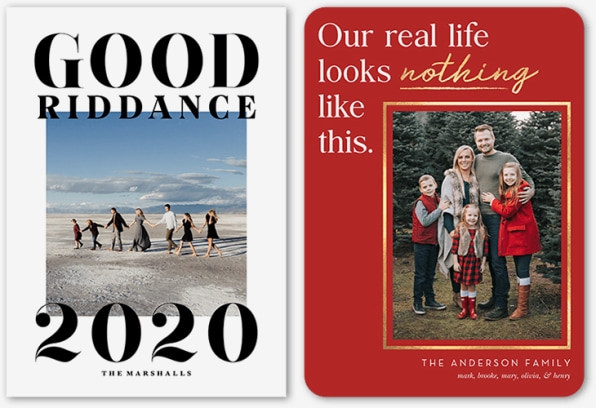
Chris Hernandez, communications director for Kansas City, Missouri, estimates that he and his husband have sent out around 60 holiday cards this year, twice the number they mailed in 2019. He doesn’t know if he’ll keep the volume that high once the pandemic is over, though.
The couple bought a bunch of new cards and dug out unused ones from years past; the biggest challenge they faced was tracking down people’s mailing addresses without letting them expect something in the post. Each card is hand-addressed with little Magic Marker drawings and a personal message inside (ranging from “Best wishes for 2021, because we all know 2020 sucks” for snarky friends to “Wishing we could be together” for more staid relatives).
“We felt we haven’t seen our friends and relatives in so long, at least we can send some sort of touchable greeting to let them know we’re thinking of them,” Hernandez explains. “We have gotten a few texts and also people sending cards back, which is nice. Right now, they’re on the buffet in our dining room.”
Greeting cards are at once an inexpensive keepsake and a loud expression of effort. You can reread them at your leisure or even save them. They show that the sender had to go to a store, sift through a bunch of options, select one for you, write a message, find a stamp, address the envelope, and put it in the mailbox—not the same as an abbreviation-laced text message sent from a couch.
A card is a super personal expression of who you are.”
Jim Hilt, president, Shutterfly
The Card Bureau, headquartered in Springfield, Virginia, has watched its online sales skyrocket 2,000%, even though its designs are higher-end, like $5 ones made of seeded paper that the recipient can plant to grow flowers. The cards also tend to bring comic relief to a decidedly not-funny year; for example, one of the holiday best-sellers says, “Baby, it’s COVID outside” above a picture of a masked snowman.
“We’re putting out sentiments on cards that are very relatable at this moment,” says founder Janie Velencia. “What else can we do? It’s a hard line to toe. It’s not really that funny. People are dying from this. We don’t really want to make a joke out of it, but we want to add some light humor to it. We’re all going through this very dark time together.”
The ancient art of well-wishes
The tradition of exchanging written greetings or holiday well-wishes dates back to ancient China and Egypt. What we think of today as greeting cards have their roots in the early 19th century, most notably Valentine’s Day, followed by Christmas cards in the mid-1800s. The early 1900s saw a big boom of what were called greeting postcards.
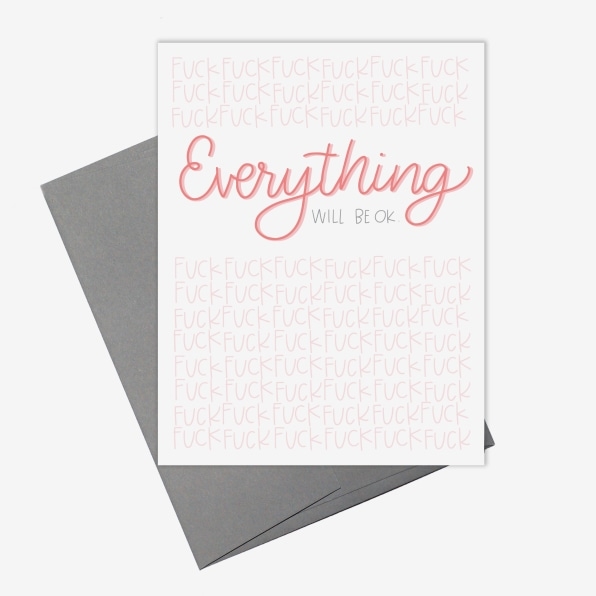
Today, greeting cards telegraph extra meaning, through not only what’s written inside, but also the image on the front, be it bucolic country scenes, funny cartoons, or photos of the senders.
“It all feeds into the idea of reinforcing connections of community and kin and using cards as the tool to do that work for us,” explains Daniel Gifford, a University of Louisville affiliated professor of history who specializes in popular culture. “When you look at a moment like 2020, with that in mind, you can see why people would gravitate toward them.”
(8)

